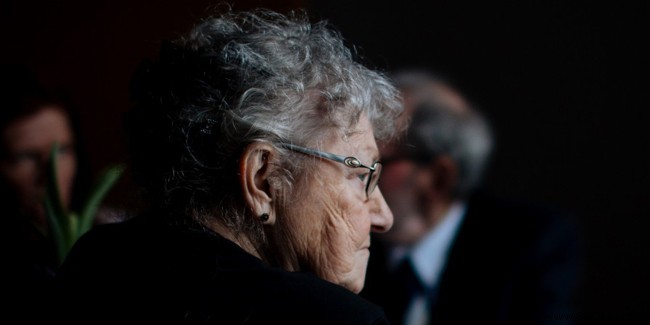
8% of the elderly are affected by the loss of autonomy in France according to the Ministry of Solidarity and Health. 1.6 million seniors will be affected in 2030, 2.5 million in 2060. The challenge of preventing and managing the loss of autonomy of the oldest is significant
The loss of autonomy, previously most often called dependency, was defined by a law of July 2001, which instituted the personalized autonomy allowance (APA), in these terms:" Any elderly person residing in France who is unable to assume the consequences of the lack or loss of autonomy related to their physical or mental state is entitled to a personalized autonomy allowance allowing load adapted to his needs." . In other words, any elderly person who is unable to perform certain acts of everyday life on their own is considered to be losing their autonomy. The latter can be more or less intense, not being able to get up alone or significant memory loss, for example. The loss of autonomy can also result in the need for constant supervision due to the state of health of the elderly person.
The first signs of age-related loss of autonomy can appear from the age of 65. They appear suddenly or, on the contrary, gradually. They are characterized by physical and psychological disorders.
The physical disorders associated with a loss of autonomy in the elderly are not always easy to detect by relatives. They are of different orders. These may be balance disorders, unexplained continuous fatigue, difficulty moving around, joint pain, severe shortness of breath, weight loss or even urinary incontinence. Memory loss can also be the first signs of Alzheimer's disease.
The loss of autonomy can also result in the elderly person through changes in behavior such as lack of hygiene, food neglect (no longer eating at regular hours, no longer shopping, etc.), problems with comprehension, isolation, lack of interest, a depressed state or even unusual mood swings (aggressiveness or passivity).
Relatives and caregivers are the first people who can detect the signs of a loss of autonomy in an elderly person. This is why communication is essential with the senior concerned. First, to confirm, or not, the signs of a loss of autonomy observed, and then, to put in place appropriate care solutions and in agreement with the affected person.
To safely assess the degree of loss of autonomy of an elderly person, aging professionals have set up an evaluation grid, the "Autonomy gerontology groups iso-resources (AGGIR)" grid. Divided into six groups (the GIRs), this grid assesses the level of dependency, from "GIR 1" which represents people unable to perform simple movements and who need the presence of home help on a daily basis, to "GIR 6" which qualifies the elderly who have full autonomy of movement and mental abilities.
The evaluation of the loss of autonomy is most of the time carried out on the occasion of a request for a personalized autonomy allowance (APA) intended to financially help the elderly person concerned to pay for home help or to take bears part of the cost of the establishment where she is accommodated. This evaluation is then carried out by the medico-social team of the department of residence.
If the loss of autonomy is linked to the normal aging process, it is possible to prevent it, or at least to delay its appearance and limit its symptoms. Continuing to practice a physical activity, for example, helps to maintain independence for as long as possible. Sports activities such as yoga or Nordic walking, for example, are recommended for the elderly.
Stimulating the brain, with games that promote memory or any other intellectual activity, is also essential to prevent the loss of autonomy.
Furnishing the home of a senior affected by the loss of autonomy also contributes to preserving their autonomy. An adapted bathtub or shower, a stairlift, for example, can make it easier for the person to stay at home.
In terms of assisting an elderly person with a loss of autonomy, calling on home helpers is a solution to consider. Relatives also have the possibility of requesting caregiver leave if they wish to suspend their professional activity to devote time to their senior concerned by the loss of autonomy.
The care of elderly people with loss of autonomy is managed by the departments. In particular, they have set up specific information structures for seniors and their families:the local information and coordination centers (CLIC). These are places of listening and dialogue where it is possible to find all the information necessary to deal with a situation of loss of autonomy. The CLIC directory is available on the website of the Ministry of Solidarity and Health.
The Communal Social Action Centers (CCAS), which depend on the town halls, are also places where it is possible to find out about all the aid and accommodation options for elderly people with loss of autonomy.